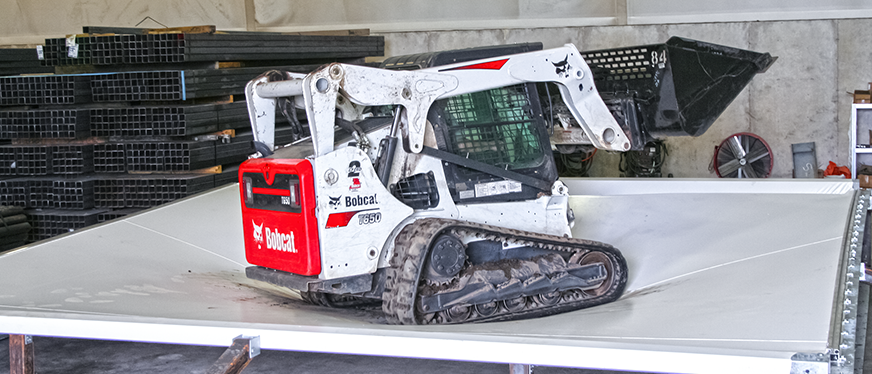PVC vs PE Fabric for Buildings: A Comprehensive Comparison

Note: This blog from 2017 was updated in 2023 with information on Legacy’s proprietary ExxoTec™ fabric.
You’ve got two options for fabric on your tension fabric building: polyvinyl chloride (PVC) or polyethylene (PE). When deciding between the two, here are the things you need to consider to make the best choice for your building.
Fabric Strength
PVC is a heavier-duty option than PE. This is important if your building will be exposed to strong winds, snow, rain, or intense ultraviolet rays. It will also impact the life span of your cladding. Most PE fabrics have a life span of 10 to 15 years. Legacy’s proprietary ExxoTec™ fabric comes in both an Elite grade and a Pro grade. ExxoTec™ Elite is twice as strong as PE fabric and comes with a 25-year warranty. ExxoTec™ Pro is 41% stronger than 12 oz. PE fabric and includes a 20-year warranty.
The way the fabric panels are made for your building will have a big impact on overall strength as well. Legacy uses hot air or wedge welding to connect our fabric sections. As a result, the seams are nearly identical in strength to, and in most cases stronger than, the fabric itself. Make sure you ask your building manufacturer how they connect the fabric sections together.
The final strength consideration is how your fabric is attached to the building’s frame. With Legacy’s patented attachment system, each fabric panel—typically 20 feet wide—is secured to the frame using a keder rail that slides horizontally on the top flange of the frame, eliminating the need to detach or flex frames during installation.
Since each roof panel is welded together, you get a waterproof, sealed exterior membrane without any holes for bolts or screws (like you’d need with a metal roof, for example). Legacy’s fabric attachment system also uses horizontal mechanical tension to stretch the fabric to the recommended level. This keeps it taut and extends the life of the building. Using both vertical and horizontal tension creates a wrinkle‐free finish and a long fabric life.
Legacy buildings have earned Florida Product Approval by meeting the stringent requirements for construction in High Velocity Hurricane Zones.
Up-Front Cost
Because they are more lightweight, PE fabrics are less expensive from an initial cost perspective. However, if your building will be expected to operate for several decades, you need to consider the replacement cost for future fabric installs. Contact the Legacy team if you’d like more information to help you compare the costs of going with PE or PVC fabric for your specific building.
Fire Safety
Legacy’s ExxoTec™ PVC fabric is flame retardant. This is not the case with standard PE. The building’s use and local codes will determine if flame retardant fabric is required. , Make sure you confirm with the building officials prior to making a costly mistake by purchasing the incorrect fabric. .
Natural Light
Because it is thicker, PVC fabric is less translucent than PE fabric. However, white ExxoTec™ PVC fabric still allows about 12% of natural light through to help lower indoor lighting costs. The strength and architectural flexibility of a Legacy building means you have nearly unlimited design options when it comes to windows and natural lighting.
Conclusion
The quality of a fabric structure is determined by many factors, including the materials chosen, the manufacturing process followed, the frame used, and the type of construction selected. When you’re considering builders for tension fabric structures, ask them about both their fabrics and their processes. This will help you determine the expected life of your building and the overall operating costs during that time.
Which type of fabric is best for your building? Contact us to find out.
Subscribe to our Blog
Recent Posts
- 5 Factors Every Project Owner Should Consider Before Approving Building Materials
- The 20-Year View: How Material Choices Impact Long-Term Operational Costs
- Climate Resilience in Commercial Construction: Why Traditional Methods May Not Be Enough
- Speed and Quality: The Role of Hybrid Building Materials
- Beyond the Bleachers: Designing Visually Striking Sports Facilities
